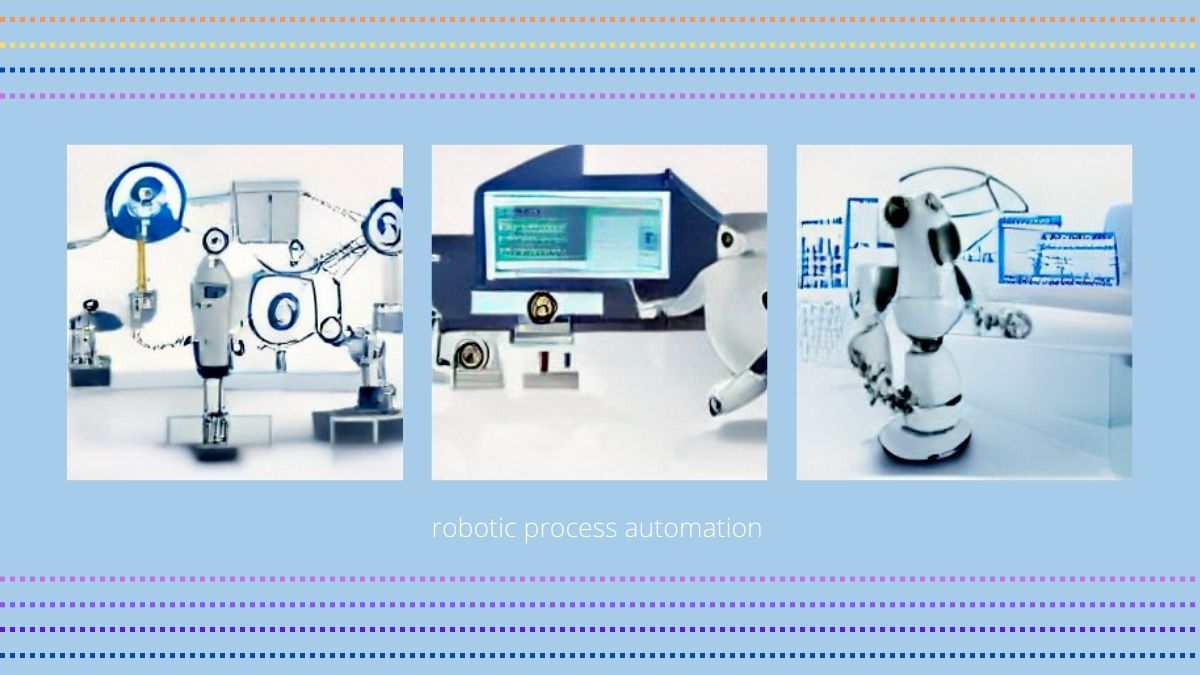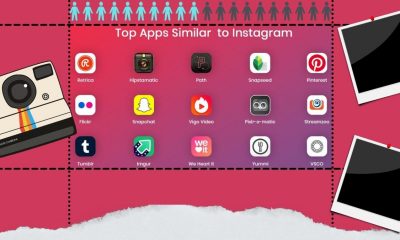Healthcare
Revolutionizing Healthcare: Innovative Applications of Robotic Process Automation

Robotic process automation (RPA) has been making waves in various industries, and the healthcare sector is no exception. With the increasing complexity and volume of administrative tasks, healthcare providers are turning to RPA to streamline their processes, improve efficiency, and enhance patient care. In this article, we will explore the role of robotic process automation in healthcare and how it is revolutionizing the industry.
Healthcare organizations face numerous challenges, including handling patient records, managing insurance claims, and processing invoices. These tasks can be time-consuming and prone to errors when done manually. However, with Healthcare Software Development, providers can use RPA to automate these repetitive and rule-based processes, freeing up valuable time for healthcare professionals to focus on delivering quality care.
Robotic process automation utilizes software robots or “bots” that can mimic human actions and interact with applications just like a human employee would. These bots can perform tasks such as data entry, report generation, appointment scheduling, and even claims processing with utmost accuracy and efficiency. By automating these tasks, RPA reduces the risk of errors, improves data accuracy, and speeds up the overall workflow in healthcare organizations.
Today’s healthcare industry is overwhelmed by high costs, high volumes and strict regulations. These pressures can impact the quality and urgency in patient care.
To reduce costs, there is a need to improve patient experience and comply with regulations which often require a lot of paperwork and reporting.
Many repetitive tasks and decisions in healthcare organizations are dependent on accurate data. Many repetitive tasks are common in all healthcare organizations, including patient onboarding and follow ups, medical billing, claims processing, prescription management, and generating reports for doctors. These are just a few of the many factors that make it possible for robotic process automation to improve efficiency, decrease costs, and enhance the patient experience.
What is robotic process automation?
Robotic Process Automation (RPA) software is used to imitate the back-office tasks performed by human workers. It integrates APIs with user interface (UI), interactions to perform repetitive tasks between enterprise productivity applications. RPA tools automate the execution of tasks, activities, and transactions between unrelated software systems by deploying scripts that mimic human processes.
The Role of Robotic Process Automation in Healthcare
Robotic Process Automation (RPA) is transforming healthcare by streamlining processes, reducing errors, and improving overall efficiency. With its ability to automate repetitive tasks, RPA is revolutionizing the industry and freeing up valuable time for healthcare professionals to focus on patient care. Here’s a breakdown of the key ways RPA is making a difference:
1. Enhanced Administrative Tasks
- RPA can handle administrative tasks such as appointment scheduling, patient registration, and billing, reducing the burden on administrative staff.
- By automating these tasks, healthcare providers can eliminate manual errors and ensure accurate and timely processing of information.
2. Improved Data Management
- RPA enables seamless integration of data from various sources, helping healthcare organizations consolidate and manage patient information efficiently.
- With automated data entry and validation, RPA reduces the risk of data inconsistencies and enhances data accuracy, leading to better decision-making and patient outcomes.
3. Streamlined Claims Processing
- RPA can automate the claims processing workflow, reducing the time and effort required to process insurance claims.
- By automating eligibility verification, claims submission, and payment processing, RPA helps healthcare providers expedite reimbursement and improve revenue cycle management.
4. Enhanced Patient Care
- By automating routine tasks, RPA allows healthcare professionals to spend more time with patients, providing better care and improving patient satisfaction.
- RPA can also be utilized in telemedicine applications, facilitating remote consultations and improving access to healthcare services.
5. Compliance and Security
- RPA ensures compliance with regulatory requirements by automating processes that involve sensitive patient data.
- With built-in security protocols, RPA can help safeguard patient information and prevent unauthorized access.
The role of RPA in healthcare is invaluable, empowering healthcare providers to optimize operational efficiency, improve patient care, and enhance outcomes. By automating administrative tasks, streamlining data management, and improving claims processing, RPA is revolutionizing healthcare delivery. Embracing RPA technology can lead to significant advancements in the industry, ultimately benefiting both healthcare professionals and patients.
| Data | Statistics |
| Tasks | 70% reduction in administrative workload |
| Claims | 30% decrease in claims processing time |
| Errors | 40% reduction in manual errors |
How can RPA be used to improve healthcare?
Healthcare industry is a sensitive sector that involves many interactions with customers. However, it also has many repetitive, time-consuming tasks and administrative tasks that do not require specialist knowledge. RPA is able to automate tasks across the entire organization, from front-office tasks and operational processes to patient interaction or bill payment.
Gartner states that 50 percent of US healthcare providers plan to invest in RPA over the next three-years. Technology that helps these providers improve delivery and streamline operations should also be cost-optimized.
RPA can help with some of the healthcare challenges:
- Administrative Data Entry:Administrative is one of many data types encountered in a healthcare environment. Although administrative data entry doesn’t often require any specialized skills it can be repetitive and time-consuming. Natural language processing (NLP), speech and image recognition can be used to extract data from many sources. Some of these data may need to converted using bots to structured data. The data must be entered into a database for the organization.
- Document digitization:RPA uses intelligent document processing (IDP), to prepare and ingest documents – relating to everything from insurance claims to health records – into a larger repository to store or use.
- Schedule and manage patient appointments:Automation using RPA bots can help with appointment scheduling and management. You can also schedule, cancel, or modify patent appointments according to your needs.
- Billing, processing and billing:Billing is often very repetitive. These processes can easily be automated with RPA. Bots will handle claims management, first-line inquires, and follow-up.
- Records management The healthcare industry is very regulated and requires strict reporting and protocols with respect to patient records and medical records. RPA is able to provide RPA with the accuracy, consistency, and protection of records necessary for regulatory compliance.
- Controlling Infections: RPA can help healthcare professionals implement infection control protocols, such as but not limited to:
- Triage tasks management
- Screening and tracking protocols, including compliance with regulatory requirements and CDC protocols
- Management of patient flow and inventory
- Based on thresholds of patient data, staff can alert and monitor patient care plans.
- Communication:RPA can be used in healthcare as in all industries to automate communication such as responses to queries on the website, customer service calls, front-line administrator queries, and emails blasts to vendors, staff, and patients.
- Remote care and customer service:RPA can be used to automate repetitive customer care and remote activity. Machine Learning and Intelligent Automation (IA), provide the ability to answer repetitive questions with consistency, speed and efficiency. RPA can be used to follow-up remote care. This is done by following business rules and delivering specific information at specific steps in the patient’s care plan.
RPA’s benefits in healthcare
Healthcare organizations can reap the benefits of RPA because of the pressure to lower costs, speed up operations, reduce the time it takes to complete tasks, improve patient experience and efficiency, as well as the desire to decrease the cost of doing business.
RPA can be used by healthcare leaders to accomplish the following:
- Automate repetitive tasks that are resource- and time-intensive to reduce healthcare administration costs
- Speed up processes such as triage by automating mundane tasks
- Increase the accuracy of data, tasks, and reporting in clinical settings and other environments by reducing human error, ensuring consistency in task and output, and enabling organizations and individuals to implement best practices.
- Increase productivity of healthcare staff through automation tasks that don’t require intelligence or thought. This frees up resources for more complicated activities.
- Enhance the patient experience by providing consistent care through more accurate decisions, lower costs and better visibility across the entire patient record.
To implement RPA in healthcare successfully, one must have holistic vision to identify where automation could be of benefit, what resources are available and whether a partnership is possible to speed up the process with skillsets and resources.
Use case: A hospital uses RPA in order to lower costs, improve process efficiency and improve patient experience
RPA can be used in many areas of healthcare. Any organization can start by focusing on the ones that are most likely to yield financial benefits.
Let’s look at how RPA tools can be used to improve hospital operations efficiencies. Generic Hospital X is a large hospital with high overhead administrative costs. 30% of these costs are devoted to correcting errors and delays in manual processes. The hospital must optimize its costs and resources to handle the increased patient influx that has been caused by COVID-19.
Hospital X analyzed its business processes and found several areas that were more costly than others.
- Prior insurance authorization
- Cost estimates
- Denials of benefits and insurance verification
- Management of claims and receivables
Each one of these steps involves multiple manual tasks, which can be time-consuming and require accuracy in order to provide quality patient care.
Hospital X can use RPA to reduce manual dependency in each process. This reduces human error and improves accuracy, thereby lowering costs. Each of these tasks were addressed by the hospital using RPA to automate them.
- Prior authorization for insurance: RPA, and AI technology can be used to submit and track down requests for prior authorization. They communicate with all constituents and the patient and schedule the procedure. Because insurance authorization submissions depend on proper coding, AI technology is able to identify and resolve inconsistencies in submissions due to manual errors. Requests for authorization to treat patients or approval for coverage for special tests are made electronically. The response is sent via an auto-generated email.
- Cost estimates Patients are informed up front about the cost of procedures, treatments, and automated payment plans.
- Insurance verification, benefits approvals and denials:RPA allows you to track and request approval of patients as they make appointments, attend or cancel. For better visibility and consistency, automatic information is generated about the cost of patient care, deductibles, and other details.
- Claims management, accounts receivable and claims management:RPA uses bots and AI technology to manage claims processing workflows. This includes denials communication, resubmission and revenue and cost forecasts based on past history. Automated revenue collection is possible with a workflow that eliminates the need for repetitive manual intervention.
These are just some of the administrative tasks in healthcare that can be streamlined with RPA. They reduce human error, repetitive tasks, and manual intervention. This will ultimately lower costs and improve the patient experience.
Conclusion
In conclusion, the innovative applications of Robotic Process Automation (RPA) have the potential to revolutionize healthcare in numerous ways. Through the use of intelligent software bots, RPA can automate repetitive and mundane tasks, freeing up valuable time for healthcare professionals to focus on patient care and more complex tasks.
Here are some key takeaways from this article:
- Improved Efficiency: RPA can streamline administrative processes, such as data entry, appointment scheduling, and billing, leading to reduced errors and increased efficiency.
- Enhanced Accuracy: By automating tasks, RPA minimizes the risk of human error, ensuring that critical healthcare information is recorded accurately.
- Cost Savings: The implementation of RPA can lead to significant cost savings by reducing the need for manual labor and increasing productivity.
- Increased Patient Satisfaction: With administrative tasks taken care of by RPA, healthcare providers can allocate more time to patient care, resulting in improved patient satisfaction.
- Data Analysis and Insights: RPA can gather and analyze large amounts of healthcare data, providing valuable insights for decision-making and improving patient outcomes.
- Integration with Existing Systems: RPA can seamlessly integrate with existing healthcare systems, making it easier to implement and adapt to different healthcare environments.
While RPA offers many advantages, it is important to remember that it is not a replacement for human healthcare professionals. Rather, it is a tool that can support and augment their work, allowing them to focus on what matters most – providing quality care to patients.
In conclusion, the use of RPA in healthcare has the potential to revolutionize the industry by increasing efficiency, accuracy, cost savings, patient satisfaction, and data analysis. It is an exciting technology that should be embraced and explored further for the benefit of both healthcare providers and patients.
-

 Marketing Tips2 days ago
Marketing Tips2 days agoWhat is my Instagram URL? How to Find & Copy Address [Guide on Desktop or Mobile]
-

 Business Imprint3 days ago
Business Imprint3 days agoAbout Apple Employee and Friends&Family Discount in 2024
-

 App Development3 days ago
App Development3 days agoHow to Unlist your Phone Number from GetContact
-

 News4 days ago
News4 days agoOpen-Source GPT-3/4 LLM Alternatives to Try in 2024
-

 Crawling and Scraping4 days ago
Crawling and Scraping4 days agoComparison of Open Source Web Crawlers for Data Mining and Web Scraping: Pros&Cons
-

 Grow Your Business2 days ago
Grow Your Business2 days agoBest Instagram-like Apps and their Features
-

 Grow Your Business4 days ago
Grow Your Business4 days agoHow to Become a Prompt Engineer in 2024
-
Marketing Tips2 days ago
B2B Instagram Statistics in 2024








